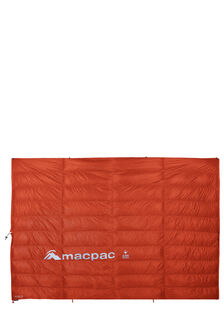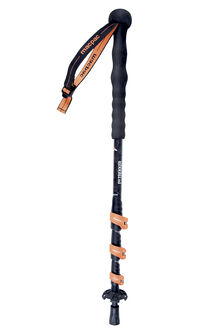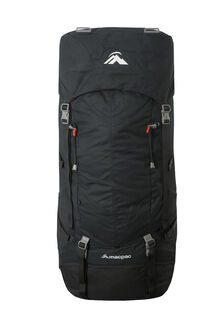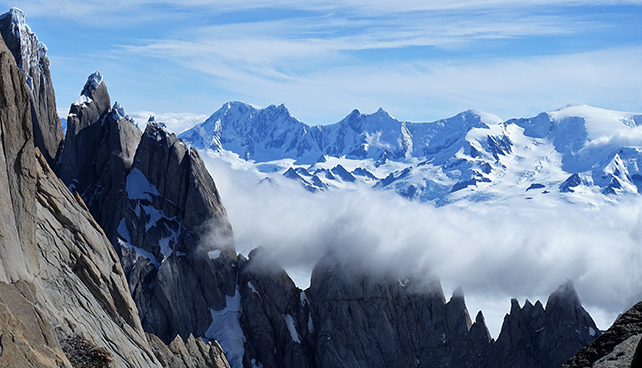
Landscape photos by Sachin Shrestha (@sacshr)
Heading into the Nepalese Himalayas is a once-in-a-lifetime adventure for most.
For Sachin, a team member at our Macpac Homebush store in Sydney, it’s a chance to head home, reconnect with family and friends, and explore the mountains that put his country on the map.
Sachin is no stranger to hiking amongst the highest peaks on earth. In April he trekked to Mt. Everest Base Camp with his brother for fun. But in October 2022, he attempted a solo alpine-style summit of Ama Dablam — a 6,812m peak that was first summited by Sir Edmund Hillary in 1963.
Standing at around 1,200m below giants like Everest, K2 and Nuptse, Ama Dablam is a perfect test for anyone with higher goals. The mountain dominates the eastern sky for anyone heading to Mt. Everest Base Camp, and western climbers refer to it as the “Matterhorn of the Himalayas”.
To the local Khumbu, however, Ama Dablam translates to Mother’s Necklace. This comes from the wide, outstretched ‘arms’ of the peak, and its hanging glacier — the necklace — which is reminiscent of pendants that contain images of the gods. The maunga (mountain) holds religious significance to Sachin and his people, so to climb it alpine style was equal parts privilege, and test.
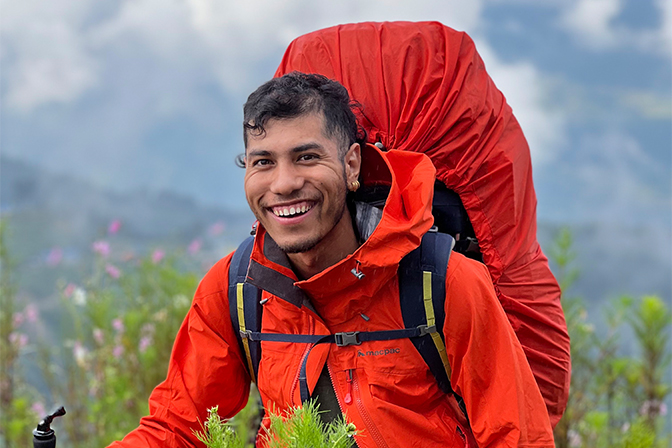
All smiles once the journey was underway
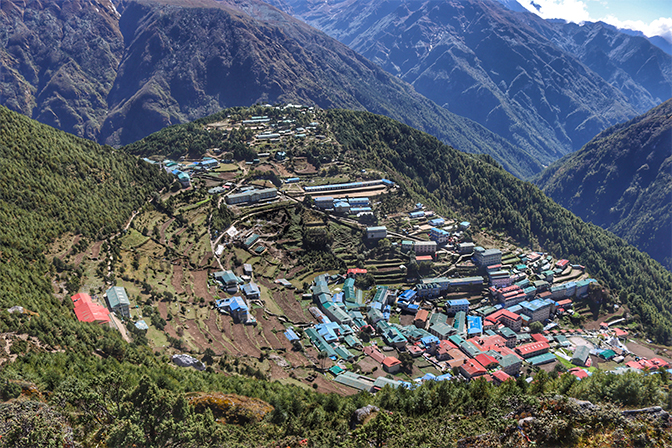
Namche Bazaar, the Sherpa capital
Climbing alpine style means you carry everything on your own. There’s no luxury of using the pre-stocked camps you find on expedition style climbs. So, with just under 20 days to get there and back with climbing equipment, shelter, rope, and backup supplies in tow, Sachin knew it would be challenging.
The plan was to set off from Sydney, land in Kathmandu, and catch another flight to Lukla — a traditional starting point for anyone heading up toward Mt. Everest. Sachin was looking forward to landing at Tenzing-Hillary Airport. Unfortunately, however, the weather wasn’t on his side.
Bad visibility in Lukla meant that there was a backlog of people waiting to land there, and two days were lost without warning while people scrambled for flights that mightn’t take off anyway.
As the crow flies, Salleri is roughly 130km east of Kathmandu, and Kharikola is another 20km north. In reality, the journey would take a day by car, and even then, he would still be around 10km south of where he’d planned to be in Lukla.
Redirecting the attempt was the only way to guarantee his expedition kept moving. So, after an arduous jeep ride to Kharikola, the journey towards the summit attempt could truly start.
It takes around six days to hike from Kharikola to Ama Dablam Basecamp, and the trek takes in the Sherpa capital, Namche Bazaar, along the way.
Many of the Sherpa who work in the mountains come from here, and for generations they’ve adapted to life at 3,440m.
For just about everyone else, the toll that altitude takes on your body increases with each step. Once you begin your progression through each camp toward the summit, it goes up exponentially.
It takes days to acclimatise properly, and it's not something to be rushed for a summit. The delays at the start of Sachin's journey were slowly gaining, and unfortunately, they caught up in the shadow of Camp One (5,700m).
Some might say an unsuccessful attempt is a failure, but the combination of altitude and time constraints are enough to topple any competent climber.
In such situations, the options are to go on or go home. Sachin’s decision was simple: get home safe.
“I sat down, looked at beloved Ama Dablam and asked myself if it was worth risking my life and [sic] go for the summit push. There were more than 30 people who went to camp 2 that day, wanting to go for the summit the following night.”
From the safety of basecamp, Sachin watched a team of Sherpa fixing the rope that those people were waiting to follow on their summit push. He also watched their headtorches creep toward the summit. But the reality of Sachin’s decision to turn back hit home a day later in Namche Bazaar, when reports emerged that one of the seven rope-fixers, Mingma Wandi Sherpa, wouldn’t be returning from the summit.
"I felt like Ama Dablam wanted me to go back home safe. I promised I would come back next October and try climb Ama Dablam alpine style.”
Safely back in Sydney, Sachin is already preparing for his return to Nepal in 2023
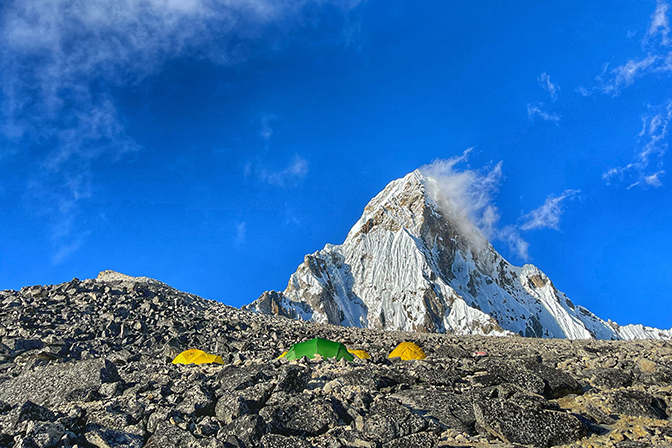
Camping in the green Olympus beneath Ama Dablam
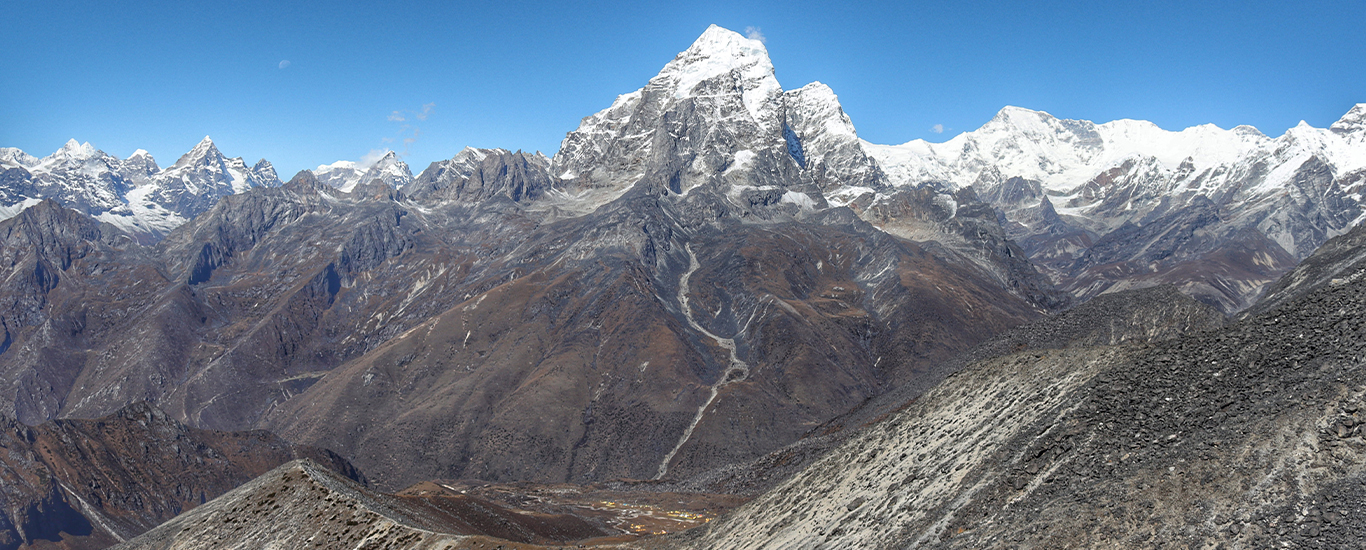
Macpac Men's Lightweight Prophet Rain Jacket
Our Price
NZ$519.99MEMBERS PRICE
20% OFFCLEARANCE
20% OFFSALE
20% OFFMacpac Men's Barrier Bib Rain Pants
Our Price
NZ$285.00MEMBERS PRICE
CLEARANCE
SALE
Macpac NZAT 700 Down Quilt
Our Price
NZ$500.00MEMBERS PRICE
11% OFFCLEARANCE
11% OFFSALE
11% OFFMacpac Alpine Legionnaire Hat
Our Price
NZ$30.00MEMBERS PRICE
22% OFFCLEARANCE
22% OFFSALE
22% OFFMacpac P3 Monopod Trekker Pole (Single)
Our Price
NZ$47.99MEMBERS PRICE
20% OFFCLEARANCE
20% OFFSALE
20% OFFMacpac Cascade AzTec® 75L Hiking Backpack
Our Price
NZ$419.99MEMBERS PRICE
30% OFFCLEARANCE
30% OFFSALE
30% OFF

